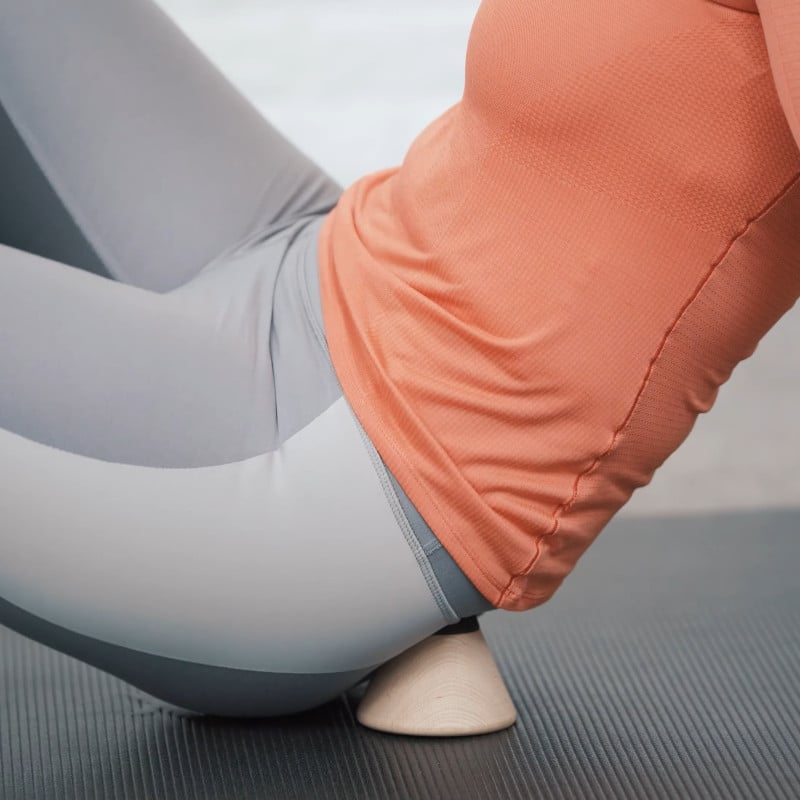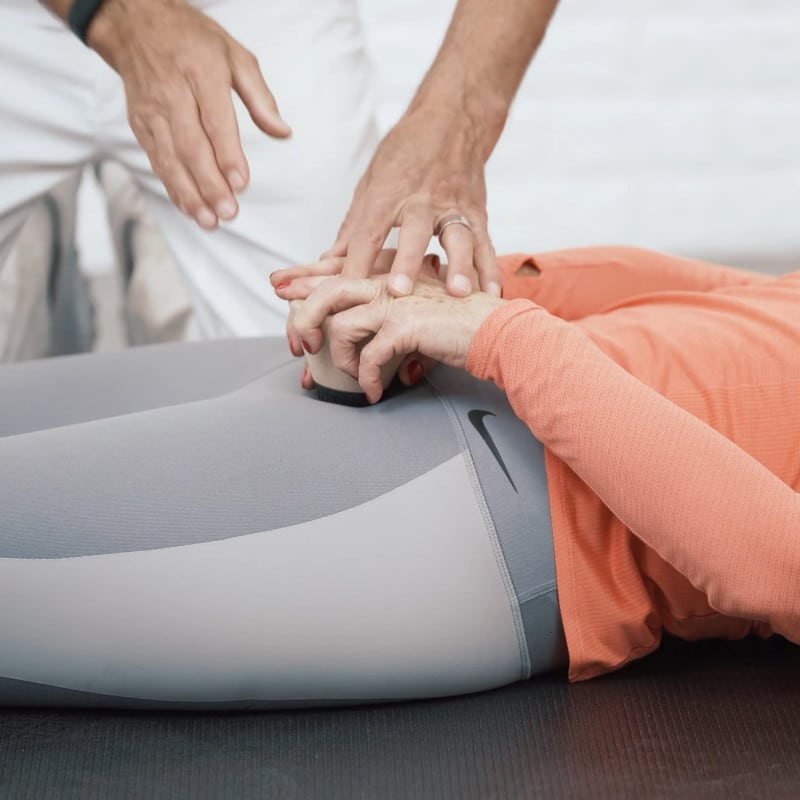Pressure Points to Relieve hip pain
Body Part:
Hip
Equipment:
Osteopressure Tool
Level:
Intermediate
Body Part:
Hip
Equipment:
Osteopressure Tool
Level:
Intermediate
Our hips go to work when we walk, run, jump, kick, squat, turn, and climb. Because our hips are involved in almost all of our movements, it’s easy to take these ball and socket joints for granted — until one of them hurts. Suddenly, the simple act of putting one leg in front of the other becomes painful. If you’re experiencing hip pain because of tense, short muscles or arthritis, our 2-step Osteopressure routine may help relieve discomfort and restore your range of motion. Before you exercise, please read the Common Causes of Hip Pain section below. There are different causes of hip pain, and Osteopressure may not be the right exercise for your condition. In some cases, exercise may worsen the pain. Keep reading to learn about the hip, additional causes and symptoms of hip pain, and what you can do for relief.
To perform our exercise, you’ll need the conical handle with the flat attachment from our Osteopressure toolset. If you don’t have our tool, use something similar, like a cork.
Our hips are weight-bearing joints. When we stand, the entire weight of our upper body passes through our hips.
We have one hip on each side of our pelvis. These ball and socket joints are the points where our trunk and legs connect. The hip joint is formed by two bones: the femur and the acetabulum. The femur runs the length of our thigh. The head of the femur is called the greater trochanter, the “ball” part of the hip joint. The ilium, ischium, and pubis bones of the pelvis form the acetabulum, and this is the “socket” part. The acetabulum is lined with ring-shaped cartilage called the labrum that absorbs shock, distributes pressure when the hip is in motion and keeps the ball in the socket. The acetabulum, muscles and ligaments keep the hip joint stable.
Our hips are synovial joints, which means they are mobile. Our hips can flex, extend, rotate outward and inward, abduct (move the leg away from the body), adduct (move the leg toward the body), and move circularly. This wide range of motion is possible because of the tendons, muscles, and ligaments surrounding the hip.
Tendons are thick cords that connect bones to muscles. The iliotibial band is a tendon running from the hip to the knee. The five major muscles of the hip are attached to the iliotibial band. They are:
Ligaments are fibrous tissue that connects bones to other bones and stabilizes the hips.
Bursae are fluid-filled sacs that minimize friction during movement. The hip contains two major bursae: one covers the greater trochanter, and the other is next to the iliopsoas muscle in the groin area.
Arthritis
Arthritis is a leading cause of hip pain. The condition occurs when the cartilage covering the ends of the bones begins to wear down; movement causes friction. In advanced cases of arthritis, there is no cartilage left, and the bones rub against each other. The two most common types of hip arthritis are osteoarthritis and rheumatoid arthritis. Osteoarthritis is caused by joint wear and tear from ageing. Rheumatoid arthritis is an autoimmune disease; the immune system attacks healthy joint tissue. Arthritis causes hip joint inflammation, pain, and stiffness.
Hip Tendonitis
Hip tendonitis occurs when tendons become irritated or inflamed because of repeatedly stressing the tendon. Exercise, sports, or overwork can cause hip tendonitis. Symptoms are pain, tenderness, and stiffness after a period of inactivity. If you have hip tendonitis, try these hip pain exercises.
Hip Bursitis
Hip bursitis is an inflammation of the fluid-filled sacs between the hips’ soft tissues and bones. The condition is caused by repetitive movements. Symptoms of hip bursitis are joint stiffness and pain (that may intensify with movement) and red or swollen joints. If you have hip bursitis, try these hip pain exercises.
A Strained Muscle or Tendon
Stretching tissue beyond its limit can strain or tear a muscle or tendon. Straining a muscle or tendon is common if you haven’t warmed up well before exercise, have lifted a heavy object, or have injured your hip. Symptoms include pain, swelling, a limited range of motion, and muscle spasms. If you’ve strained a muscle or tendon in your hip, please do not perform our Osteopressure routine; it may worsen the situation.
Hip Labral Tear
Hip labral tears occur when the cartilage lining the acetabulum is torn. High-impact sports like running can cause labral tearing. Symptoms are pain or stiffness in the hips, pain in the buttocks or groin, and a limited range of motion.
Hip Fracture
A hip fracture is a broken or cracked femur, usually because of a fall. Symptoms include pain in the hip or groin and, in extreme cases, inability to walk. A hip fracture can be serious. If you think you’ve fractured your hip, do not perform our Osteopressure exercise. See your doctor.
Visit our shop to get your Osteopressure tool set. While you’re there, take a look around. We’ve got lots of pain-relieving tools and products waiting to be added to your cart.
Take me to the shop.To maximize the benefits of our Osteopressure, press intensely and intelligently. Challenge yourself to exercise at a high intensity that may produce an uncomfortable sensation. (This is a sign that the Osteopressure is working.) However, do not press to the point that your breaths become short and shallow, or you find that you’re holding your breath or clenching your teeth.

If this exercise is difficult because the area you are pressing is sensitive, try performing it against a wall.

Perform our Osteopressure for hip pain 6 days a week and leave 1 day for rest. When your hips begin to feel better, you can reduce how often you exercise.

This deep-dive Encyclopedia Article is everything you need to know about your hip joint, what causes hip pain, which body parts are affected, and treatment options.
Become a Hip Pain Expert Now
Discover how to relieve lumbar pain and hip discomfort with our Back Hero. All you have to do is choose the perfect Back Hero stack, lie down, and stretch.
Try Our Back Hero Stretch
Knee pain doesn’t discriminate. Whether you’re young, old, athletic or a couch potato, these jumbo joints will ache at some point. This 3-minute stretching routine can help.
Relieve Knee Pain Now